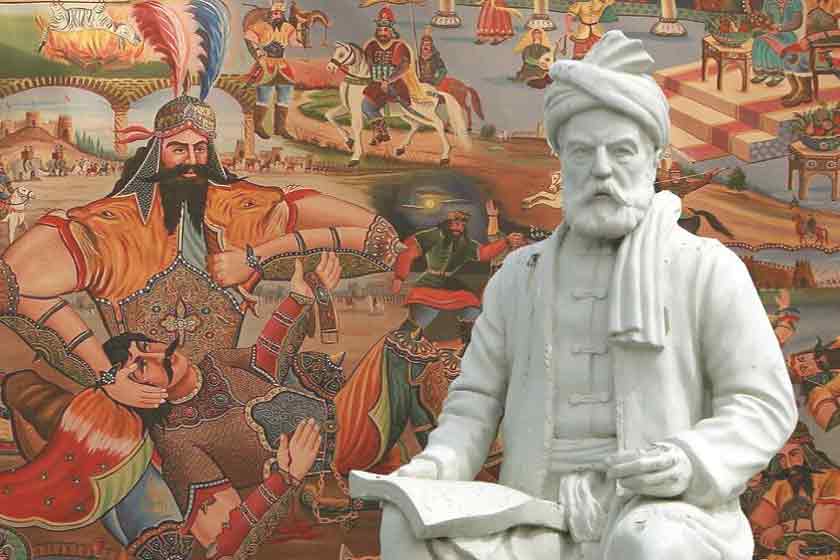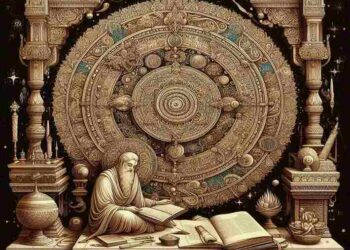Table of Contents
ToggleIntroduction
How Persian Literature Influenced World Poetry Persian literature, which is frequently cited as one of the most significant literary traditions in history, has influenced poetry all across the world in addition to the literary cultures of the Middle East and Central Asia. Persian literary traditions have impacted and enhanced poetry in ways that are still felt today, from the classical poets of the Middle Ages to modern voices.
Persian poetry has contributed significantly to international literary trends because of its rich intellectual ideas, intense emotional content, and striking imagery. The richness of Persian literature spread across borders from its birthplace in ancient Persia (present-day Iran), having a significant influence on the literary traditions of India, Central Asia, and even the West.
The Origins of Persian Poetry
Persian poetry dates back to ancient times, with the earliest examples being the oral traditions and written works that emerged around the 6th century CE. These early works were influenced by Zoroastrianism, the ancient religion of Persia, which often incorporated themes of cosmology, dualism, and spirituality.
Read More
The roots of Persian poetry are in the Divan tradition, which refers to a collection of poems. Persian poets initially wrote in a variety of verse forms, including odes (ghazals), epics, and elegies, using rich metaphors and symbolism to convey deeper meanings. Over time, Persian poetry became recognized for its formal structures, especially the ghazal (a lyrical, often melancholic, form of poetry focused on love, longing, and beauty), and the masnavi (a narrative poem in rhymed couplets).
Persian poetry is also deeply entwined with Persian philosophy, mysticism, and Sufism. The mystic poets of Persia, particularly from the 12th century onward, such as Rumi, Hafez, and Saadi, infused their poetry with spiritual wisdom, discussing themes of love, unity, and the divine.
The Influence on Indian Literature
Persian literature had a profound impact on the literary traditions of the Indian subcontinent, especially during the Mughal Empire (1526-1857), when Persian was the court language. Persian poets and scholars played a key role in the development of classical Urdu poetry, and Persian literature provided the foundation for many of the greatest poets of the Indian subcontinent.
One of the most significant influences was the ghazal form, which found a fertile ground in the poetic tradition of the Indian subcontinent. Indian poets like Mirza Ghalib, Allama Iqbal, and Faiz Ahmed Faiz built upon the Persian ghazal tradition, while infusing their own cultural nuances, linguistic variations, and socio-political commentary. The themes of love, loss, beauty, and mysticism were explored in depth by these poets, who not only embraced Persian forms but also added their own distinctive voices.
Ghalib, for instance, was heavily influenced by Persian poets like Hafez and Saadi. His work, characterized by emotional intensity, philosophical reflections, and a deep sense of existential questioning, often mirrors the Persian poets’ focus on love, mysticism, and spiritual yearning. Similarly, Iqbal’s work, which is deeply philosophical and infused with a sense of awakening and self-realization, draws heavily on Persian intellectual traditions.
Moreover, the influence of Persian poetry on classical Urdu literature was not just confined to formal elements such as rhyme and meter. The themes, metaphors, and conceptual frameworks of Persian poetry, including ideas about love as a spiritual force, the nature of beauty, and the eternal search for meaning, all found a significant place in Indian poetry. These themes continue to resonate in modern Urdu poetry today.
The Western Influence: Persian Poets in Europe
While Persian poetry’s influence on the East is widely acknowledged, its impact on the Western world has also been substantial, especially in the 19th and 20th centuries. Persian poetry found its way into the European literary canon through translations and adaptations, and this interaction helped shape the romantic and modernist movements in Europe.
One of the most notable figures in this transference of Persian poetic traditions to the West was the German philosopher and poet Johann Wolfgang von Goethe. In his West-östlicher Divan (1819), Goethe drew inspiration from the works of Persian poets, particularly Hafez. Goethe admired the mysticism, passion, and intellectual depth of Persian poetry, and he often incorporated these elements into his own works. This fusion of East and West became a major element of the European Romantic movement, which embraced the themes of transcendence, emotional depth, and a deep connection to nature—ideas that are present in abundance in Persian poetry.
Similarly, the British Romantics were influenced by Persian poetry, particularly the works of Omar Khayyam. Khayyam’s Rubaiyat (quatrains) were translated into English by Edward FitzGerald in the 19th century, leading to a resurgence of interest in Persian literary culture. The quatrains of Khayyam, with their reflections on fate, the fleeting nature of life, and the quest for meaning, resonated with the existential concerns of Western intellectuals, particularly during the Victorian era.
The impact of Persian poetry on Western literature can also be seen in the works of writers such as T.S. Eliot and W.B. Yeats, who were deeply influenced by Eastern philosophies and literary traditions. Persian poetry’s emphasis on spiritual themes, such as the union between the self and the divine, and its celebration of the beauty of nature, became integral to the development of modernist literature.
Key Persian Poets and Their Global Legacy
Rumi (1207-1273)
Rumi is perhaps the most internationally recognized Persian poet, and his works have been translated into multiple languages, influencing a broad array of writers, philosophers, and thinkers worldwide. His Divan-e-Shams-e-Tabrizi and Masnavi are filled with mystical teachings, meditations on divine love, and the search for spiritual fulfillment. Rumi’s poetry emphasizes the universality of human experience and the interconnectedness of all beings, resonating deeply with readers around the world.
His emphasis on love, loss, and the divine inspired numerous Western poets, particularly during the 20th century. Rumi’s legacy continues to influence modern poetry, as his works are often cited by contemporary poets seeking to explore spirituality, love, and human connection.
Read More
Hafez (1315-1390)
Hafez is another towering figure in Persian poetry, known for his ghazals that explore themes of love, wine, mysticism, and the divine. His mastery of metaphor and wordplay, as well as his profound philosophical insights, have made him an enduring influence not only in Persian-speaking countries but also in the West. His works inspired poets such as Goethe and other German Romantics, and his influence extends to contemporary poets, particularly in the Middle East and the West.
Saadi (1210-1291)
Saadi’s Golestan (The Rose Garden) and Bustan (The Orchard) are among the most important works of Persian literature. Saadi’s ability to weave together moral and philosophical lessons with vivid, relatable storytelling has made his works timeless. His reflections on human nature, justice, and the importance of kindness continue to inspire readers globally, contributing to the universal appeal of Persian literature.
Omar Khayyam (1048-1131)
Though best known for his Rubaiyat (quatrains), Khayyam’s influence on world literature, particularly in the West, has been immense. His reflections on life’s fleeting nature, love, and fate have resonated deeply with readers. The translation of Khayyam’s Rubaiyat by Edward FitzGerald helped introduce Persian poetry to a broader audience in Europe and played a pivotal role in sparking interest in Eastern philosophy and literature.
Persian Poetic Forms and Their Influence
The Ghazal
The ghazal is one of the most influential poetic forms to have originated from Persia. It is a lyrical form of poetry, typically focused on themes of love, loss, longing, and beauty. The form consists of rhymed couplets and a refrain, with each couplet capable of standing alone. The ghazal spread beyond Persia and became a key form of poetry in languages such as Urdu, Arabic, Turkish, and even English.
Modern poets like Agha Shahid Ali, a Kashmiri-American poet, have reinvigorated the ghazal tradition, blending it with contemporary themes and issues. The form’s emotive power and concise expression of complex emotions have made it a popular choice for poets across cultures.

The Rubaiyat
The rubaiyat is a quatrain form of poetry that became famous through the works of Omar Khayyam. The form typically consists of four lines, with a particular focus on the brevity of life, the transient nature of existence, and the pursuit of meaning. The influence of the rubaiyat can be seen in the work of many poets, particularly in the Western world, where it was adopted and adapted into different literary movements.
Read More
FAQ
1. How has Persian poetry influenced modern Western poets?
Persian poetry has influenced modern Western poets through its themes of love, spirituality, existential questions, and the beauty of the natural world. Writers like Goethe, Fitzgerald, and later figures such as T.S. Eliot and W.B. Yeats drew from the mystical and philosophical elements found in Persian poetry. Persian poetic forms like the ghazal and rubaiyat have also left a lasting mark on Western literature, inspiring a more reflective, existential style of poetry.
2. What is the significance of the ghazal in Persian poetry?
The ghazal is a form of poetry that explores themes of love, longing, and beauty. It is significant because it allowed poets to express complex emotional and spiritual experiences in a structured, highly musical way. The ghazal spread beyond Persian-speaking cultures, influencing the poetry of India, Central Asia, and even Western literature.
3. What are the key themes in Persian poetry?
Key themes in Persian poetry include love (both earthly and divine), the search for meaning and purpose, the transient nature of life, and the longing for union with the divine. Persian poets also often explore philosophical questions about existence, fate, and human nature, blending these with mystical and spiritual insights.
4. How did Persian poetry spread to the West?
Persian poetry spread to the West primarily through translations and the writings of poets like Goethe, who were inspired by Persian works. The translation of Khayyam’s Rubaiyat into English by Edward FitzGerald in the 19th century was a significant event that introduced Persian poetry to a Western audience. Additionally, European intellectuals and Romantic poets admired the emotional depth, mysticism, and wisdom found in Persian literary traditions.
5. What is the legacy of Persian poetry today?
The legacy of Persian poetry is evident in its influence on contemporary poetry, both in the East and the West. Persian themes, such as the exploration of love, spirituality, and existential questions, continue to inspire poets around the world. Moreover, Persian poetic forms like the ghazal have been revived by modern poets in various languages, ensuring the continued relevance of Persian literary traditions.
















